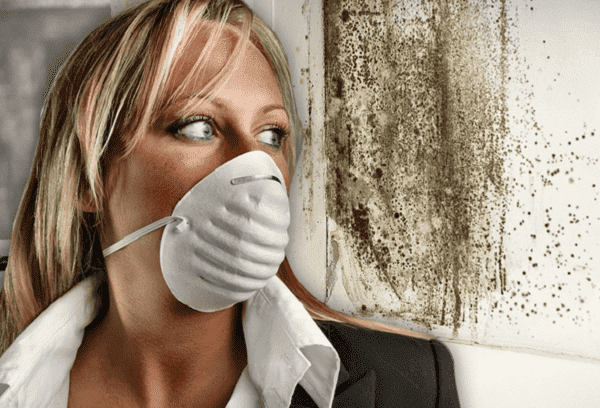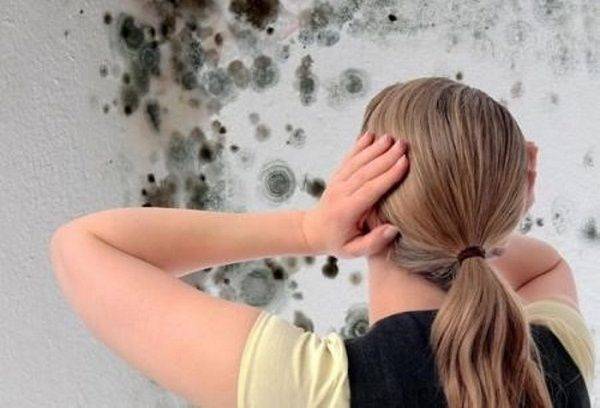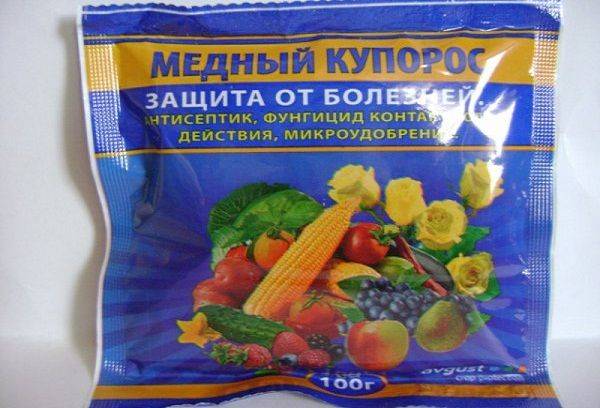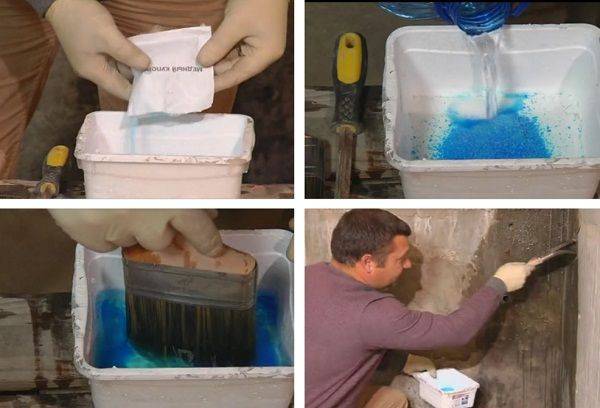How to get rid of mold on walls using copper sulfate
An effective remedy for combating fungus that grows on the walls of premises is copper sulfate. But to obtain a working solution, you need to know how to dilute copper sulfate to treat walls against mold, as well as how to use it correctly. This will help get rid of harmful fungus.

Where does mold come from and why it needs to be dealt with
The appearance of mold not only spoils the overall appearance of the walls in the premises, but also negatively affects the health of people who spend a lot of time in them. Mold can cause constant weakness, headaches, and general malaise. It can cause an allergic reaction and provoke an asthma attack. Constant exposure to fungal secretions can lead to various upper respiratory tract diseases.
The main reason for the appearance of this fungus is most often high humidity and ineffective ventilation. Mold spores are found almost everywhere. They move freely through the air, settling on objects. When placed in a favorable environment, they germinate and, growing, form a colony, which we observe in the form of dark spots. It is clear that it is advisable to get rid of this uninvited “tenant” as quickly as possible.
How to get rid of mold on walls
One of the most effective and at the same time inexpensive remedy against mold on walls is copper sulfate (copper sulfate).It can be purchased at any stores offering gardening supplies, as well as at construction and hardware stores.
This drug is produced in the form of a powder or small blue granules. To treat walls against mold, you should prepare a working solution, for which copper sulfate must be diluted in water at the rate of 20-30 grams of the drug per 1 liter. Copper sulfate dissolves better in warm water. Before use, the finished composition must be mixed well. To increase efficiency, you can add a tablespoon of vinegar to the solution.
After the copper sulfate is prepared, you can begin treating the walls against fungus.
- Places where there are traces of mold on the walls should be cleaned. This can be done with a spatula or fine sandpaper.
- It is advisable to wipe the cleaned areas with soapy water. The use of a soap solution increases the efficiency of further processing with copper sulfate.
- Allow the cleaned areas to dry.
- Using a sprayer or kitchen sponge, apply the solution to the affected areas of the walls.
- After a few (3-5) hours, after the solution has dried, apply copper sulfate again.
- This procedure is carried out 2 to 5 times, depending on the depth of fungal damage to the walls.
- In case of deep damage, applying the solution on the surface of the walls will not be effective enough. In this case, you must first completely remove the affected plaster and only then carry out anti-fungal treatment.
We take precautions
Copper sulfate is a toxic substance. Although in order to be poisoned by it, it takes a long time, much longer than the time it takes to treat the room. However, if handled carelessly, you can cause serious harm to your body.Therefore, you should protect yourself when working with copper sulfate.
- Be sure to wear rubber gloves during processing.
- Protect your eyes from accidental splashes with glasses.
- If there is no special clothing, then you need to dress so that your entire body is covered.
- Cover your mouth and nose with a respirator or gauze bandage.
- During treatment, open the windows and turn on the hood.
- Clothes, upon completion of work, must be washed and dried in the open air.
After treatment, you must limit your stay in these rooms to a minimum. After 2-3 days, the copper sulfate solution will dry completely and will not pose any danger to human health.
Mold prevention
To get rid of mold on the walls forever, or at least for a long time, it is necessary, simultaneously with the treatment, to eliminate the conditions for its reproduction and development.
- It is very important to regularly ventilate the room. Good ventilation is the best protection against fungus.
- The walls in the room must not be allowed to overcool.
- Try to avoid prolonged increases in humidity (constantly hanging laundry, boiling pots for a long time, etc.).
- Maintain plumbing and plumbing in good order.
- For repairs, use moisture-resistant materials and antiseptic substances.
- When installing furniture to external (“outdoor”) walls, it is necessary to leave a gap to allow air to circulate freely.
- In rooms with high humidity, it is advisable to limit the number of indoor plants.
- When replacing wooden windows with plastic ones, it is advisable to take care of the ventilation system. This is especially important if the walls and ceiling are covered with non-breathable materials: ceramic tiles, plastic or MDF panels or non-woven wallpaper.
If you follow these simple rules, you can get rid of mold forever.
The appearance of dark spots from fungus on the walls is very unpleasant, but if the treatment with copper sulfate against it is carried out efficiently, then mold will not appear in this room for several years, even under conditions favorable for its development.




Is it possible to add copper sulfate to lime to whiten affected areas?
Not only possible but also desirable.
I still have copper sulfate, the expiration date has long passed. Is it possible to whitewash walls with vitriol on the street using polystyrene foam and how to dilute it
Is it possible to have honey? add vitriol to the emulsion after treating the affected area of the walls?
Is it possible to treat with copper sulfate if I have already treated with ANTI-MOLD?
Is it possible to dilute copper sulfate with primers?
Is it possible to add copper sulfate to the emulsion diluted with callers?
Is it possible for a pregnant girl to be in a room treated with copper kuparos after 8 hours?
Did you read the article carefully? Precautionary measures were also clearly indicated there. It is generally undesirable to enter the room after treatment for 2-3 days until the solution dries completely. And pregnancy makes these conditions even more demanding ;)
If it is not possible to leave the premises “without visits,” then it is better to look at more expensive and safer treatment methods. (just my opinion)
In general, congratulations on the new addition :)
It’s possible if you don’t lick the walls, copper sulfate practically doesn’t stink, you can get poisoned by it if you “plainly” drink too much of the chemical or if you breathe in the resulting aerosol when sprayed from a spray bottle.
Sorry for the stupid question, but is soap solution liquid soap and water? And what concentration is better?
As I understand it, you can’t sleep in this room if you treat the wall with copper sulfate
How long after treatment with copper sulfate can cement mortar be applied to the wall?
In the room, mold began to appear on the wall closer to the ceiling. I treated it with vitriol as written in the article. The mold is gone. I hope for a long time. I would not like to repeat this procedure often